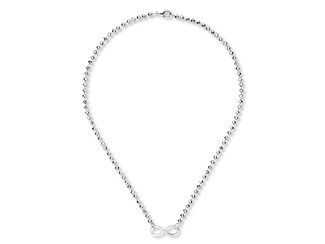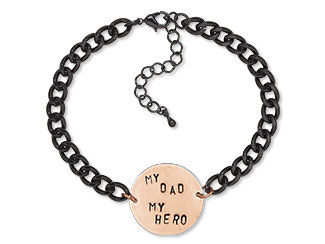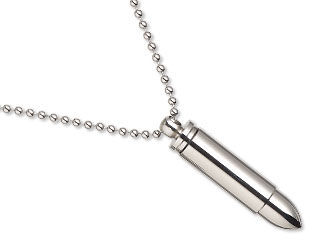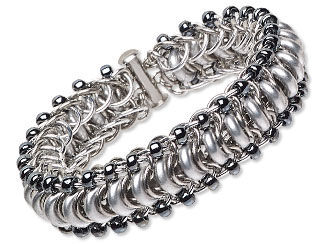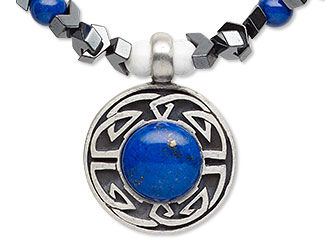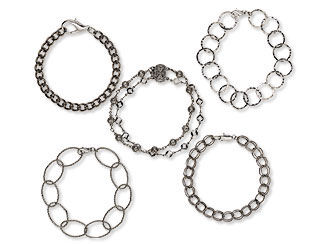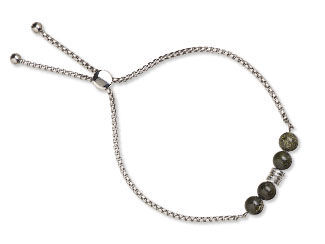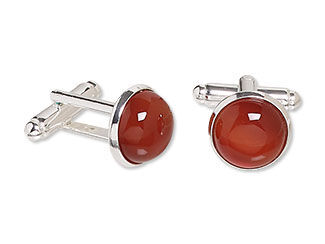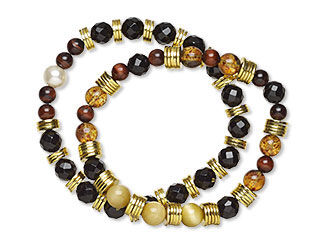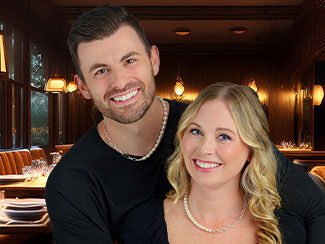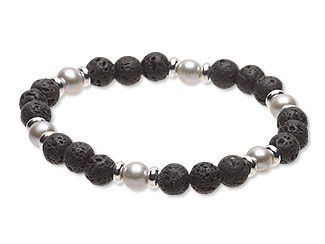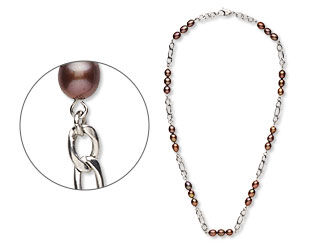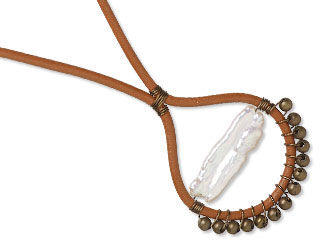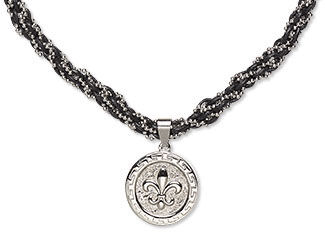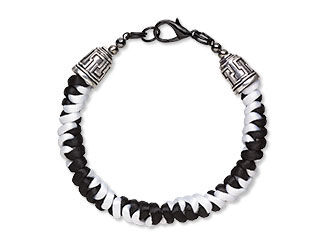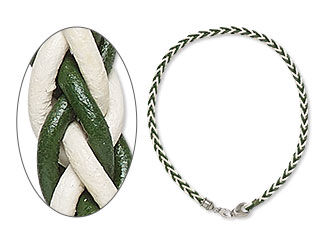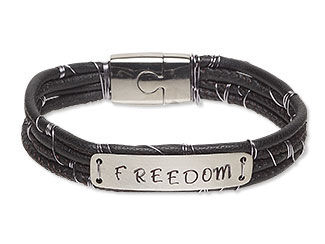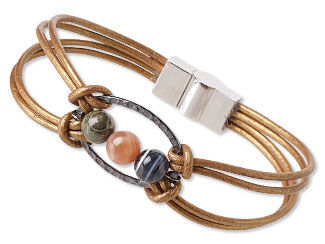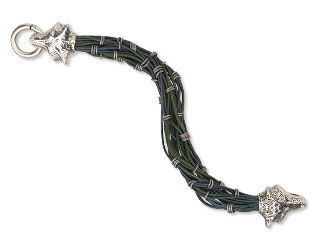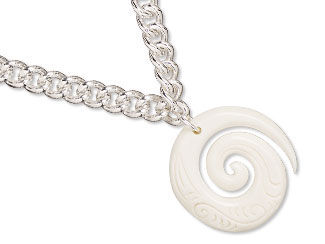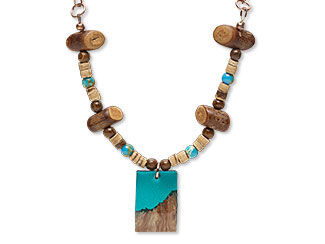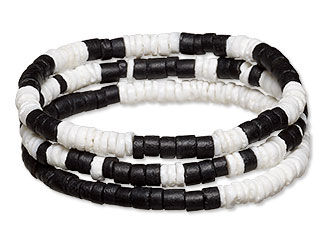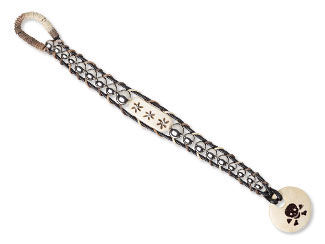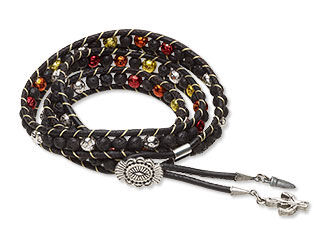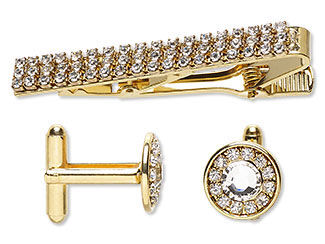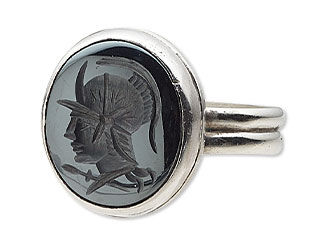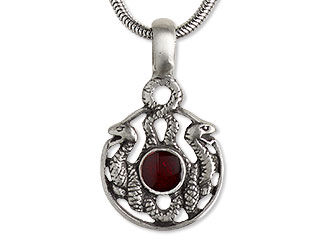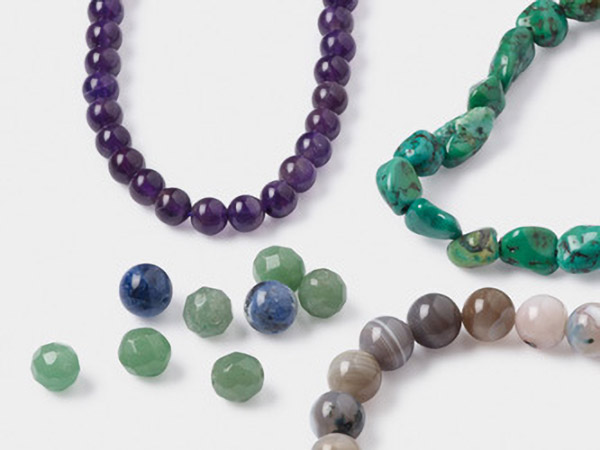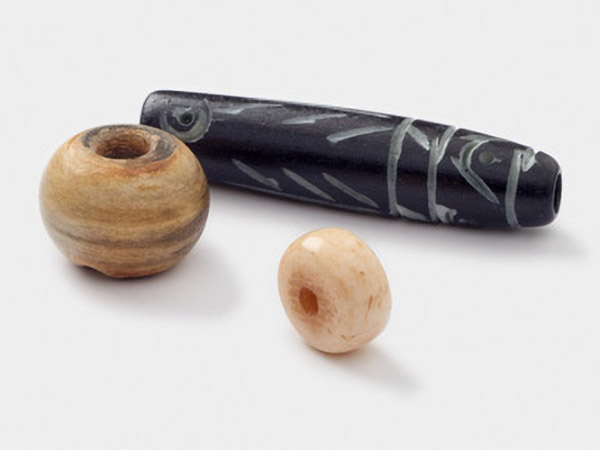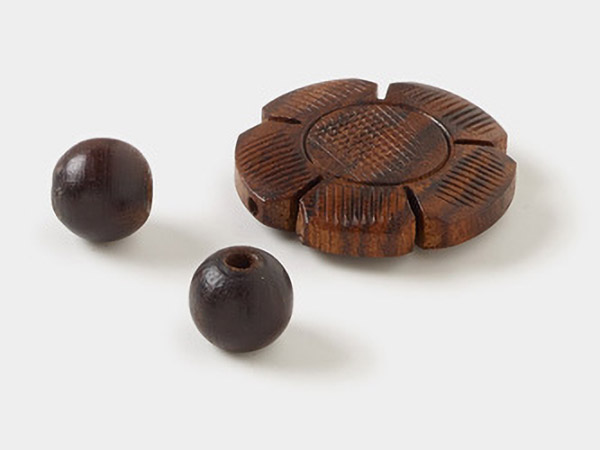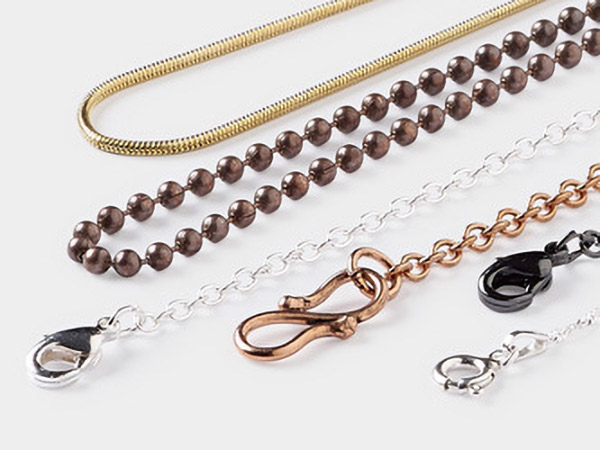Men's Jewelry: Defining a Sense of Style
Celtic Knot Ring and design Ideas NA3Q, and L102
Men's jewelry isn't a new concept by any means. Necklaces, rings, bracelets and earrings have long been worn to express strength, wealth and personal tastes. Today, men continue to use these accessories to shape the definition of masculine style, whether that be sleek pieces to elevate crisp suits, comfortable designs built for everyday wear or avant-garde statement-makers.
Explore this selection of techniques and materials to help you design wow-worthy complements to modern menswear.
In this video, we're diving into the hottest trends in men's accessories. From bold pendent necklaces to brooches, men's jewelry is taking center stage as a powerful form of self-expression.

Chain:
Metal is highly favored in men's jewelry because of its stylistic versatility and rugged resistance to damage. Incorporating chain is an easy way to bring metallic appeal, texture and a visual break to your pieces, especially men's necklaces and bracelets. Higher-end metals Higher-end metals like gold and sterling silver are timeless and can be a neutral base for embellishment. These classics are well suited for both special occasion jewelry and daily staples. For humid climates or customers needing jewelry with a bit more grit, we highly recommend stainless steel. This industrial metal is tarnish resistant and exceptionally durable.
Gunmetal:
Another popular metal look is the moody, dark sheen of gunmetal. Because of its grey tones, gunmetal has become increasingly popular as accents in punk, military, goth and industrial-style pieces. Don't let these edgy aesthetics limit you; gunmetal beads can also be used to form sleek and sophisticated accessories ideal for business-casual and modern formal attire. For a similar look, design with Hemalyke™ beads and components. This manmade metallic-grey stone shines with a stormy mirror-like finish nearly identical to gunmetal.
Gemstones:
Infused with tradition, symbolism and earthen appeal, gemstones are an excellent material for all styles of men's jewelry. Hardy gemstones like quartz crystal and agate appear in a variety of hues making them popular for all-purpose designs. Howlite, on the other hand, is also seen in numerous shades but is much softer and better suited for special occasion designs. Other favorites for men's jewelry include obsidian, ruby, labradorite and turquoise. But why stop there? The realm of gemstones covers a wide spectrum of colors, shapes and hardness to cater to all of your customers.
Pearls:
The most important aspect of this trend is finding pearls that speak to gender-neutral styles. A popular choice is white rounds, but shades of mauve, cream and beige are also common. To create a bold, memorable design, opt for brightly colored crystal pearls in vivid hues, or choose unusual shapes like polygons, teardrops and more.
What you pair with pearls is just as important. Many designers are using traditionally masculine elements, like thick chain, metal links and safety pins. Links and pendants with axes, locks, skulls and crosses add an edgy feel to pearl designs. Designers are also pairing pearls with chain to play on other popular men's necklaces.
For designs with a boho feel, pair pearls with gemstones, crystals and metal beads. Gemstones add a natural, earthen feel to jewelry designs. This combination is ideal for men who love the outdoors or are spiritual and believe in the metaphysical properties of gemstones. Using crystals in pearl jewelry can bring out the wearer's softer side and is perfect for guys who love to shine in the spotlight. For an extra, stylish look that oozes luxury, incorporate precious metals or metal beads with smooth finishes.
Kumihimo:
Use this ancient Japanese braiding technique to combine threads, chains, leather and more to form intricate and beautiful cords. Meditative qualities, beautiful simplicity and easy customization make kumihimo a great addition to any design. A braided look can provide a beautiful balance of bulk and soft detail.
Leather and Leatherette Cord:
Leather is very durable, pliable, comfortable and a core element for many menswear styles. Create bolo ties, bracelets, rings and more for biker edge and Western-inspired looks. Use rivets, stamps and studs to embellish its soft surface, mold sheets into new shapes, weave or braid strips into complex details. In many designs, leatherette can be used in place of leather as a cost-effective and animal-friendly alternative.
Wood, Bone and Horn:
Get back to nature with styles inspired by the early ages of man. Wood, bone, horn and other natural-based materials cater to those who prefer traditional and eco-conscious fashion choices. Taiwanese cheesewood beads are refined from fast-growing cultivated trees and offer a lightweight feel and the timeless beauty of woodgrain. Bone is porous and can be easily dyed or embellished with hand-carved patterns, mantras or symbols for added personalization.
Stacked Jewelry:
The stacked bracelet trend incorporates various popular elements, including earthy palettes and "rugged" materials like hammered metals, hemp and rough-cut gemstones such as darker bone beads, lava rocks and wood beads, which exude toughness and masculinity. Contrasts play a key role too; dark tones coupled with brighter hues create visually pleasing patterns, offering a subtle elegance. Mixing textures is also prevalent, often pairing leather with metal components like chain, clasps or links. The interplay of natural and man-made materials—combining gemstones with metal, wood with glass, or leather with chain—serves as an effective way to highlight a balance between softness and strength, echoing common themes in men's fashion, literature and life.
Cuff Links:
Cuff links have been a constant element of men's fashion for centuries. Recently their popularity has once again risen to star status, accepted as a fashionable trend among men (and women!) of all ages. Before there were sleeve cuff buttons, there were cuff links—and before there were cuff links, men's shirts were held together at the wrist using cord or ribbon. These days, cuff links are associated with men's fine evening wear: black tie (semi-formal—black jacket and tie worn to a wedding) and white tie (full formal—white tie and tails worn to a Nobel Prize ceremony).
Men's fashion has historically allowed very little space for a guy to show his personality. He might have a college ring or a collection of novelty ties—but the more formal the dress code, the less room he had to express himself. The businessman's uniform of suit and tie meant cuff links and associated accessory jewelry (tie tacks, tie bars and shirt studs) gave men a way to say a little bit about themselves every single day.
Note: Only certain styles of men's shirts accept cuff links; these can be called kissing cuffs, double cuffs or French cuffs.
Just like buttons, cufflinks come in many shapes, sizes, styles and materials. They are both functional and ornamental. They are not actually considered formalwear, although some style guides consider wearing cuff links on patterned shirts to be over the top.
Making Personalized Cuff Links
Cuff links, like other pieces of jewelry, can be made for formal and informal wear. Fill a cuff link bezel setting with colorful polymer clay for a laid-back look, or a gemstone cabochon for something dressier. Glue on a sports team pendant so he can wear something to work on game day (especially if he's going to miss seeing it in person). Got a formal wedding to dress up for? Make personalized cuff links for the father of the bride! Just pick up a cuff link with pad and adhere cat's eye glass or shell cabochons in the wedding colors. Match them to the tie and cummerbund for full impact.
Men's Jewelry Sets
Cuff links can be made as a pair or as part of a jewelry set, like earrings are for women's jewelry. The other pieces commonly created for the guys include a watch band, tie clip or tie tack and—in the most formal settings—shirt studs. Shirt studs are probably the most uncommon of the three, as they are worn only with black tie and white tie clothing.
Shirt studs are embellished findings that take the place of shirt front buttons in tuxedo and other formal dress shirts. Those "dots" down the front of a tuxedo shirt aren't buttons, they're replacements for the buttons.
Tie tacks and tie clips are more common. They keep a long business tie from falling into a fellow's coffee or soup. They can easily be made to match cuff links by gluing matching cabochons onto tie tack or tie clip findings.
Signet Rings
Signet rings (or family crest rings, wax seal rings, heraldic rings—they've been known by many names throughout history) as a fashion statement are gaining in popularity as the choices for men's jewelry increase.
Signet rings have a storied history dating back to ancient Egypt, symbolizing status and authority through their unique engravings and symbols. Originally used to authenticate documents with their impression on wax, these rings were essential for signifying an authority figure's presence and approval. The design evolved from pharaonic symbols to more elaborate family crests and even simplistic icons like initials or animals, reflecting both personal and familial identity.
In modern times, signet rings are no longer reserved for the aristocracy, but have become a medium for personal expression accessible to everyone. Get in on the action, experiment with different materials for your ring and different design ideas and see what stands out.
Making Custom Signet Rings
To start crafting your bespoke signet ring, consider the base material—sterling silver or brass are excellent choices for those seeking a blend of tradition and durability. For a touch of novelty, why not explore double heart rings or other unconventional shapes? Rings with flat-pad settings serve as engaging foundations for your creative designs. Simply attach a cabochon—be it glass, gemstone, a cameo or whatever speaks to you—to your ring, or use polymer or metal clay to sculpt a custom symbol or crest, offering a modern twist on the classic seal ring.
How to wear your signet ring? There’s no strict rule. Whether you prefer it on the pinky, the index finger, the middle finger or the thumb for a bold statement, what matters most is how it reflects your personal style. Consider what your chosen symbol and ring placement might say about you, and use this as a guide to tailor your design.
Now that you have some ideas for stylish masculine accessories, it's time to take that creative spark and make something fantastic. Happy creating!
Shop for Your Materials Here:
Have a question regarding this project? Email Customer Service.
Copyright Permissions
All works of authorship (articles, videos, tutorials and other creative works) are from the Fire Mountain Gems and Beads® Collection, and permission to copy is granted for non-commercial educational purposes only. All other reproduction requires written permission. For more information, please email copyrightpermission@firemtn.com.

